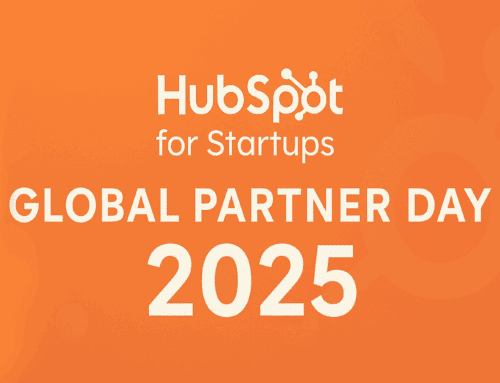Automate Your Workflow: Register Waiting List Users from Google Sheets
Introduction to Workflow Automation
Are you tired of manually managing your spreadsheets and wondering if there’s a better way? Well, you’re in luck! Workflow automation is here to save the day. It’s like having a personal assistant who’s always on time, never takes breaks, and doesn’t need coffee. Sounds dreamy, right? In this digital age, automation is not just a luxury; it’s a necessity. Let’s dive into how you can harness the power of automation to simplify your life.
Whether you’re running a small business or just trying to manage your personal projects, automating repetitive tasks can free up your time to focus on what truly matters. Imagine having all new entries from your Google Sheets automatically registered into a waiting list without lifting a finger. Intrigued? Read on to discover how you can make this happen!
Understanding Make: Your Automation Ally
If you’re not familiar with Make, let me introduce you to your new best friend in automation. Make is a versatile platform that connects different applications and automates workflows with ease. Think of it as the central hub where your digital life comes together seamlessly. With Make, setting up integrations between tools is as simple as pie, allowing even non-techies to feel like programmers.
The beauty of Make lies in its flexibility. It supports a wide range of apps, enabling you to create custom workflows tailored to your specific needs. Whether it’s moving data, triggering actions, or updating records, Make does the heavy lifting for you. It’s like having a Swiss Army knife for all things digital—ready to solve your problems with a flick of a wrist.
The Power of Google Sheets
Google Sheets might seem like just another spreadsheet tool, but it’s much more than that. It’s an integral part of many businesses and personal productivity setups, offering powerful features that go beyond mere number crunching. Collaborating in real-time, accessing data from anywhere, and integrating seamlessly with other apps are just a few of its superpowers.
Imagine having your team update a shared spreadsheet in real-time, with each entry reflecting instantly. Now, pair this functionality with automation. You can capture and utilize data in ways that were previously unimaginable. This makes Google Sheets not just a tool, but a powerhouse in managing live data effectively.
Setting Up Your Automated Workflow
Preparing Your Google Sheets
Before jumping into automation, you’ll want to set up your Google Sheets properly. Think of it as laying a strong foundation for a skyscraper. You’ll need to organize your data efficiently, ensuring that each column and row serves a specific purpose. This way, when automation kicks in, it knows exactly where to slot each piece of information.
Start by creating a template that includes all necessary fields—like Name, Email, and any additional info relevant to your waiting list. This will act as a blueprint for both your data entry and the automation process. Proper preparation prevents poor performance, as they say, so don’t skip this important step!
Using Make to Connect Google Sheets
With your Google Sheets primed and ready, it’s time to harness the power of Make. First off, you’ll need to connect Make to your Google account, which is as straightforward as signing in. Once connected, Make acts as a bridge, pulling data from your Sheets effortlessly. It’s like magic—not the wand-waving kind, but definitely the productivity-increasing kind.
In Make, you’ll create a scenario—the technical term for your automated workflow. Think of it as storytelling: your scenario outlines the journey each piece of data will take, from spreadsheet entry to registration. You can add various modules to your scenario, dictating specific actions at each step. This is where the fun begins, as you customize every detail to fit your needs perfectly.
Troubleshooting and Optimization
Even the best-laid plans can hit a snag. When dealing with automation, minor hiccups can occur. But don’t worry! The key is to embrace these challenges as learning opportunities. If something doesn’t work, it’s not a dead end; it’s simply another step in refining your process.
Make provides comprehensive logs and debugging tools to help you quickly identify where things went awry. It’s like having a flashlight in a dark room—guiding you to the problem and helping you fix it swiftly. Remember, optimization is an ongoing process; there’s always room to tweak and improve as your needs evolve.
Benefits of Automating User Registration
Think about the time and effort you’ll save by automating user registration. It’s like swapping a horse-drawn cart for a rocket ship. Not only does automation reduce manual input errors, but it also increases efficiency exponentially. Those minutes add up, and soon enough, you’ve saved hours, if not days, of work.
Furthermore, automating this process ensures consistency. Each entry is processed uniformly, reducing variability and maintaining data integrity. It’s peace of mind you can count on, allowing you to direct your energy toward innovation rather than administration.
Conclusion
And there you have it! By combining the robust capabilities of Google Sheets with the seamless automation of Make, you’re well on your way to mastering workflow automation. No more manual data transfers or tedious list management. Instead, you get more time to dedicate to the creative and strategic aspects of your projects.
FAQs
1. Can I automate other types of data processes using Make?
Absolutely! Make is highly versatile and can handle a wide array of automated workflows beyond just user registration. Explore its capabilities to find solutions for various needs.
2. Is my data secure when using Make?
Yes, Make prioritizes security, employing stringent measures to protect your data throughout the automation process. However, always ensure your original data sources are also secure.
3. Can I integrate Make with other apps?
Of course! Make supports numerous third-party applications. Whether you’re using CRMs, project management tools, or email platforms, Make can likely be integrated with them.
4. Do I need to know how to code to use Make?
No coding skills are required! Make is user-friendly, with a visual interface that allows you to create complex workflows easily. It’s designed for everyone, regardless of technical expertise.
5. Does Make offer support if I run into issues?
Yes, Make provides extensive documentation and customer support to help troubleshoot any issues that arise. They’re committed to ensuring your automation experience is smooth and effective.










